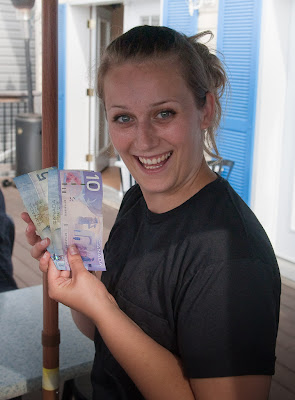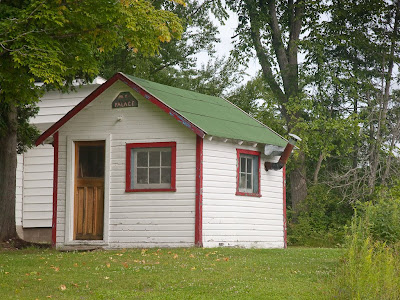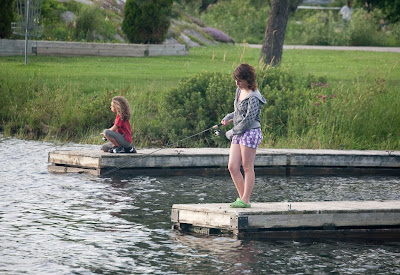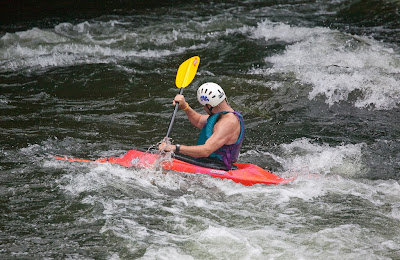Instead, we decided to vacation in our own backyard, lovely Haliburton Ontario. We spent an enjoyable week at the cottage and my wife and I booked courses at the local arts college, Haliburton School of the Arts, part of Sir Sanford Fleming College. Naturally, I booked a photography workshop and Trish booked a class in stained glass making.
After looking around at a lot of photography workshops and experiencing a rather expensive one with Alain Briot last year, I'm very happy to say that this summer's workshop was the bargain of the century. It only cost $250 CDN and it ran for a full five days. Not only that, but it was in some of the loveliest countryside you can imagine and the instructor, Rob Stimpson, was first-rate. The workshop was a little on the large side, with 18 participants, but my fellow classmates were a pretty talented bunch and I learned a lot from seeing the world through their eyes.

Waitress, Haliburton Ontario
We spent a couple of hours in the classroom each day getting sound advice from Rob, a very seasoned and talented travel photographer. The rest of the time was spent taking photographs in Haliburton and vicinity. For those that may not know where Haliburton is, it's a small town just to the south east of Algonquin Park and is a couple of hours north of Toronto. It is a very photogenic area and has lovely lakes, great rivers with rapids and the town itself is very nice with several older buildings worthy of a photograph.

My Palace, Haliburton Ontario
Rob Stimpson offers several other workshops throughout the year and, based on my experience in Haliburton, I'd recommend his workshops to anyone. He's a very congenial companion and a very knowledgeable photographer with a talent for communicating what he knows.

Nothin' to do but Fish, Haliburton Ontario
There are two workshops in particular that I'm keen to sign up for. The first one runs in June and features moose photography in Algonquin park. Rob says that he sighted 16 moose in this year's workshop and I saw some of his stunning photographs of moose munching away with lovely backdrops of wetland scenes. At this time of year, the male moose are quite docile, but they still have the good beginnings of a rack. They don't seem to mind canoes getting up close and personal, so you can take great shots without having to tote around 800mm lenses.

Bucking the Wave, Minden Ontario
The second course that I intend to take in the next couple of years is Rob's Gales of Adventure workshop. Anyone who grew up listening to Gord Lightfoot's classic Wreck of the Edmund Fitzgerald (click on link to see a wonderful video of the launch and demise of the ship set to Lightfoot's music complete with underwater photography of the wreck) will instantly see why I want to take this course. Here's a brief description from Rob's site:
Plus, you get to stay in the relative comfort of the Naturally Superior Adventures Lodge. All this for $795 CDN (based on single occupancy). What a deal!
All in all, it was a wonderful way to spend a week and I enjoyed it immensely. I also got some nice photos for my portfolio and will enjoy printing them out in the cold winter months.



